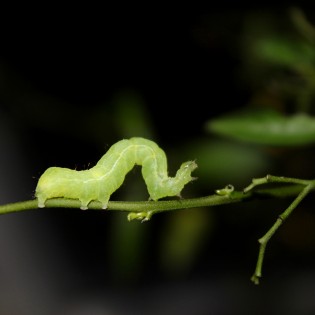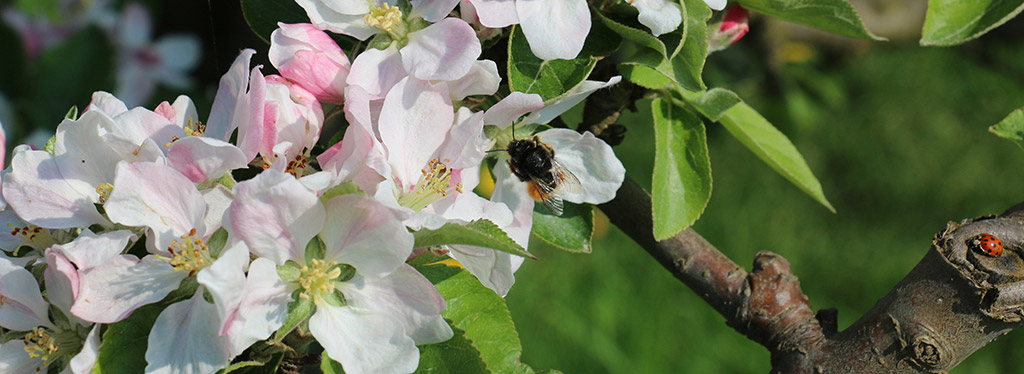
When everything begins to stir after cold winter passes, it’s not only trees and plants that awake from their seasonal lull, but also fungus and insects start awaking from hibernation. The apple blossom weevil is the first beetle to leave his winter retreat under the tree bark. As soon as temperatures rise above 15°C, the small, black weevils crawl out on to twigs and branches. The female jabs her proboscis into the apple buds that are just about to unfold, in order to lay her eggs in them. In the still-closed bud small maggots then hatch out of the eggs and eat the inside of the bud. When it later opens you can see the petals that soon go brown, while the inner part of the bud is consumed. Using a special tapping tool an orchardist can tell how many beetles are roaming his trees. Since the blossom weevils have no natural enemies, the orchardist must step in, if the beetle population gets out of hand. For organic orchards a Pyrethrum plant extract made of chrysanths can be used as pesticide. When temperatures are above 15°C it is only effective if the beetle comes into contact with it, as this natural substance quickly dissipates.
Another uninvited guest is the winter moth. This grey-blue winged creature survives the winter in minutely small eggs. When temperatures rise, the caterpillars hatch and crawl all over the plant by contracting and detracting their backs. They eat holes into the young leaves and blossom and weaken the healthy development of the plant. The caterpillars are a treat and a basic food source for many types of bird. Except in extreme circumstances this keeps the population in check and they do not pose a threat.




